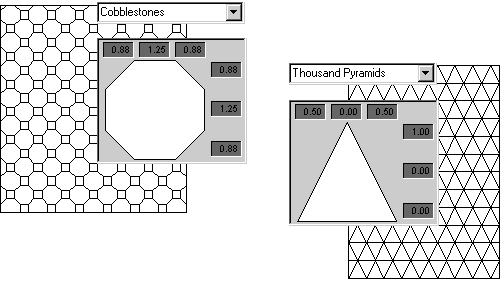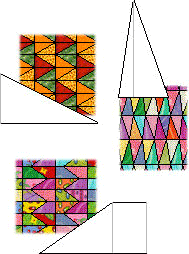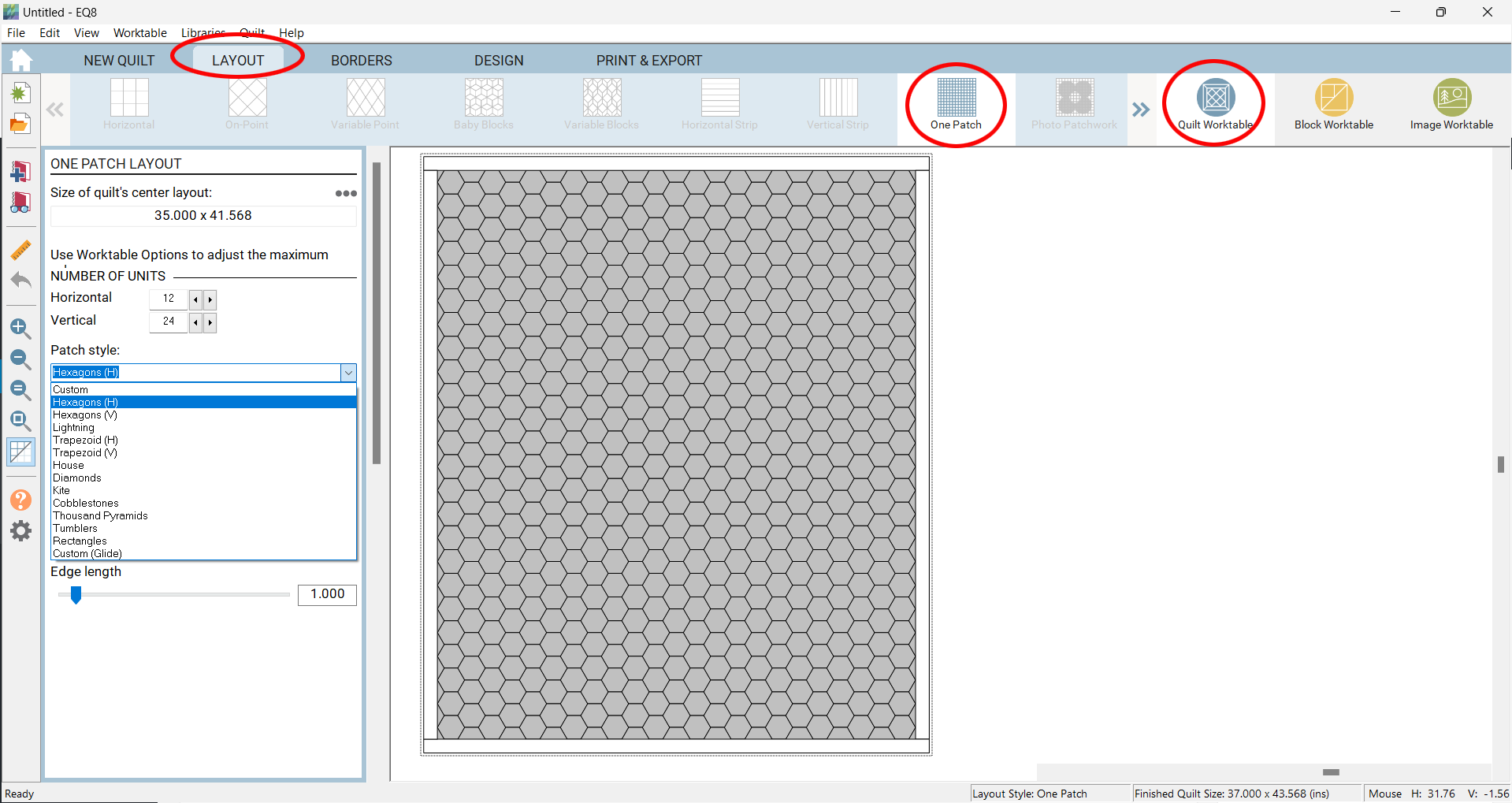A One Patch quilt can be created by clicking Quilt Worktable > One Patch > Layout
Here is a lesson with more information.
The Patch Styles
As shown below, the available patch styles for One Patch quilts are: Hexagons (H and V), Lightening, Trapezoid (H and V), House, Diamonds, Kite, Cobblestones, Thousand Pyramids, Tumblers, Rectangles, Custom (Glide) and Custom.







Creating Custom One Patches
Custom patches start like other patch styles, but you can change their shape. Custom patches have light gray lines which run horizontally or vertically across the patch. These lines are used to control the shape of the patch. They do not appear on the quilt, just on the palette.
To change the shape of a custom patch, position your cursor over one of the gray control lines in the display. When your cursor changes to ![]() or
or ![]() , click, hold, and drag the line to a different position. The shape of the patch will change as you drag the line. The dark gray boxes in the palette will indicate the length of a particular side of the patch.
, click, hold, and drag the line to a different position. The shape of the patch will change as you drag the line. The dark gray boxes in the palette will indicate the length of a particular side of the patch.
The Custom style lets you create patches of 8 or fewer sides.


The Custom (Glide) style lets you create patches of 4 or fewer sides.


You can create unique shapes by overlapping the control lines with one another or the edges of the patch. If you push a control line on top of another and you want to select the line underneath, hold down the Ctrl+click (Command+click) and drag again.
Understanding How Patches are Counted
One Patch quilts are created by tiling patches next to one another to create a quilt. The shape of the patch determines how the finished quilt will look. The shape of the patch also determines how the patch tiles and how EQ counts the patches.
In some cases, like the Horizontal Hexagon, the adjacent patches are positioned above and below the original patch.

In other cases, like the Thousand Pyramids, the adjacent patch is flipped.
![]()
Other patches require a combination of these methods to create the tiling pattern.
![]()
Because all these tiling methods are required for creating the One Patch quilt, the procedure for counting the patches is not always clear. The illustrations below are to help you understand how EQ is counting the patches. In all cases, the number of units horizontally and vertically has been set to 2 x 2.


 Electric Quilt 8
Electric Quilt 8


